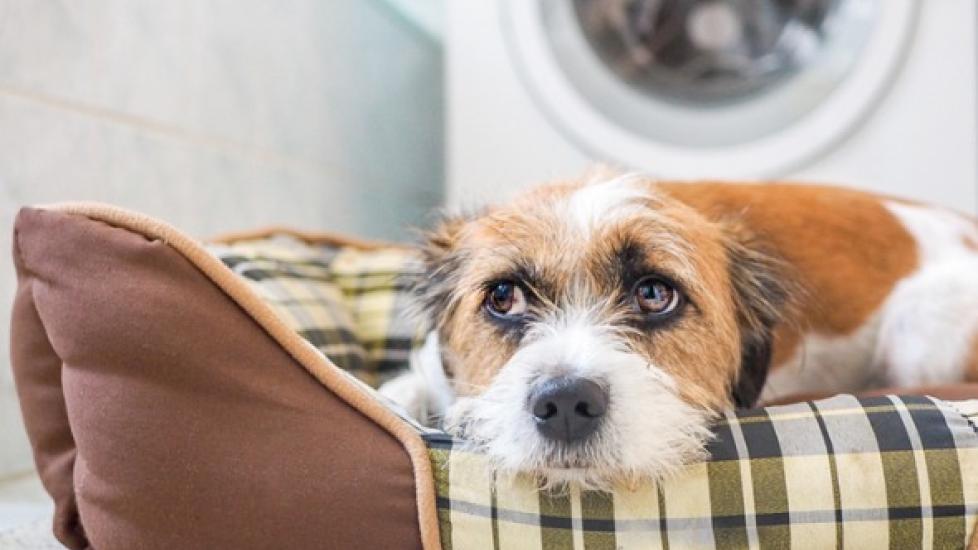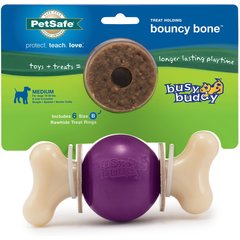Natural Ways to Calm a Nervous Dog
If you have a nervous dog, you may not always have to resort to pet behavior meds or dog supplements with artificial ingredients to keep him calm. Sometimes, an all-natural treatment can do the trick.
But before you can figure out how to calm a nervous dog, you will first need to determine the cause of the nervousness.
Diagnosis Is Key
Dr. Ihor Basko, DVM, CVA, and practice owner of All Creatures Great or Small, says that “Diagnosis is key. What exactly is causing the problem?”
Temporary changes, such as traveling or visiting the vet, can cause acute and temporary anxiety, while more chronic problems, such as ongoing separation anxiety or phobias of any kind, lead to chronic anxiety. Your veterinarian can help determine the type and cause of your pet’s anxiety.
Dr. Debbie Decker, MSSA, DVM, and owner of Synergy Veterinary Care, LLC, also stresses the importance of a veterinary visit. “Rule out medical problems—especially if there has been a change or it is a new anxiety, [including] chronic pain, such as arthritis in joints, back pain [or] mouth pain; decreased vision (night vision is often affected first); and decreased hearing.”
Once medical ailments have been ruled out and the cause of the anxiety has been diagnosed, you can take the next steps to help calm your nervous dog. Dr. Basko explains that “[Anxiety in dogs] is a complex issue, and ‘one thing’ or product will not solve it.” Your vet may prescribe a treatment that might include dog anxiety medication or natural stress-relieving tools, or a combination of both.
Here are some popular, natural ways to relieve anxiety in our canine friends.
Exercise and Mental Stimulation
For dogs with anxiety, physical and mental exercise encourages relaxation. Studies have shown that exercise can be as good as medication for relieving anxiety in people, and it probably works similarly in dogs. However, to be maximally effective, it’s best to combine physical exercise with mental stimulation.
Interactive toys can help during those times when you have to be gone. The Busy Buddy® calming toy can promote mental stimulation for your dog by encouraging her think and work towards a reward on her own.
Recommended Products
Dog Anxiety Vests
How do dog anxiety vests work? Dr. Decker explains it like this, “Heavy blankets (for people), or tight-fitting wraps or shirts for nervous dogs, are based on deep pressure [to help] calm the arousal level in the system and to help with self-regulation.”
The ThunderShir®t for dogs is designed based on the age-old practice of swaddling—like you do with babies. Swaddling, much like a dog anxiety vest, provides gentle and constant pressure, which helps sooth and calm a baby—or in our case, a dog.
Dr. Basko explains that these jackets work for some, not for others, but are certainly worth a try. This type of jacket is designed to be worn in situations that cause anxiety, such as going to the vet or groomer.
Recommended Products
Dog Calming Treats
To help calm your nervous dog, calming chews such as NaturVet® Quite Moments calming aid can be given during times of stress.
These products are intended to be aids, not a solution. Dr. Basko explains that these products may help reduce anxiety but won’t eliminate a dog’s “triggers.”
Dr. Basko goes on to say, “Different dogs will respond differently because each is ‘wired’ differently. It’s all about finding what works for your dog and being cautious not to overdo it.”
Recommended Products
Calming Music for Dogs
Reducing stress and calming the nerves of an anxious dog can sometimes be achieved through acoustics.
The Pet Acoustics® Pet Tunes calming music speaker provides mind-soothing acoustics that help create a relaxing environment for your pooch.
Calming music for dogs can be used to ease separation anxiety or to help prepare for stressful events such as having guests in the home, taking a trip to the vet or hearing fireworks.
Dr. Decker suggests leaving sounds on that are usually on when you are home, or calm or classical music to promote relaxation.
Recommended Products
Dog Pheromone Diffusers
A study published in the BMJ Journals VetRecord explains that the dog appeasing pheromone (DAP) replicates the pheromone that is responsible for the sense of well-being experienced by puppies when they are with their mother.
The study shows that DAP has demonstrated calming properties in many clinically tested stressful situations such as kenneling, veterinary visits, firework exposure and the introduction of puppies into a home.
Dr. Decker recommends using DAP at home to help soothe your nervous dog. A convenient option for introducing DAP into the home (especially if you have multiple pets) is the ThunderEase dog calming diffuser kit.
DAP diffusers simply plug into the wall, and you’re all set! The diffuser will take care of spreading the DAP throughout the room; it should be placed close to where your pet spends most of her time.
Diffusers can be beneficial for dogs suffering from separation anxiety when home alone and during stressful home events, such as guest arrival or remodeling.
Calm Home Environment
Scents are often used as a tool to soothe anxiety for humans and non-humans alike. You can use home diffusers, and Dr. Decker recommends using only natural, pet-friendly essential oils.
Certain essential oils are known to calm and relax, and Dr. Basko explains, “If the owners are calmed down by essential oils such as lavender, and there is less stress in the home, it will communicate to the dog.”
When we take care of ourselves, we are better able take care of others. Dr. Decker explains, “Take care of yourself! If the owner is stressed/anxiety [riddled], dogs closely bonded with their owners will take on that anxiety.” Creating calm for your dog starts by creating calm in your home and family.




